Touring Tibet in the Summer “Rainy” Season
The high season for tourism in Tibet normally runs from April to November, with the peak months from June to October, which includes the rainy season in Tibet. And while it may be rainy, Tibet sees very little in the way of actual rain, making it a good time to visit the plateau region. Summer in Tibet is the warmest time of year, and despite the rains, it is a very good time for a trip to Tibet for those that have time only in the summer months. And while the rainy “monsoon” season in Tibet does bring some rains across the plateau, you can enjoy a tour of Tibet in the summer without too much hassle.
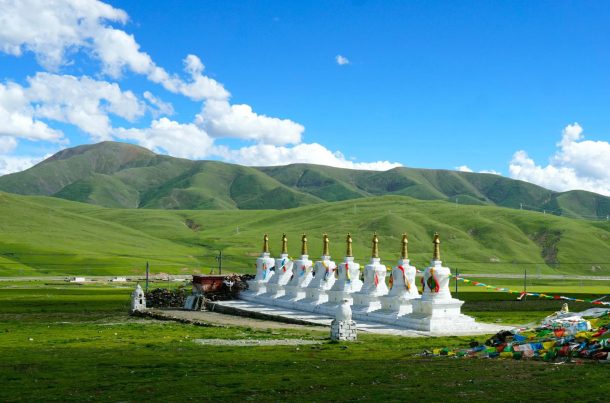
Table of Contents
Can you Visit Tibet in the Rainy Season?
There is really no wrong time to visit Tibet, and you can travel there throughout the year, with the exception of the Losar (Tibetan New Year) celebrations. In the summer months of the rainy season, it is definitely not a bad time to visit, and there are certain things you can only see in the summer months.
When is the Monsoon Season?
The monsoon season in Tibet runs from June to September, though the main months for the peak rainfall are in July and August. As with many of Asia’s monsoon-affected areas, the Tibet Autonomous Region (TAR) is also affected by the Southwest Indian monsoon, which comes up over the Himalayas from the Indian Ocean.
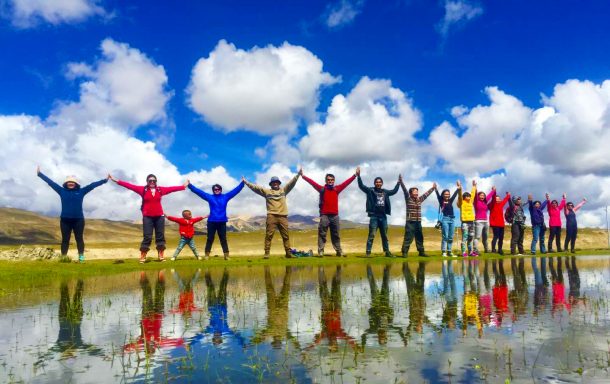
However, the massive mountains of the Himalayas form a natural barrier for the worst of the monsoon. This Shadow Effect forces the clouds to drop the majority of their rain on the western and southern slopes of the Himalayas. The plateau region actually sees a lot less rain than it would if the mountains were not there. The other benefit is that the rainfall normally comes in the late afternoon to evening, and even overnight. This means that most of the days are bright enough for sightseeing, though you can sometimes get a few short-lived daytime showers.
The amount of rainfall varies depending on the region, with higher rainfall in the east than in the west of the region. On average, Tibet sees around 120mm of rainfall across the region in July, and around 90mm in August. In Lhasa, you can see an average of around 120mm per month in July and August, while Shigatse sees a higher average of around 130mm per month.
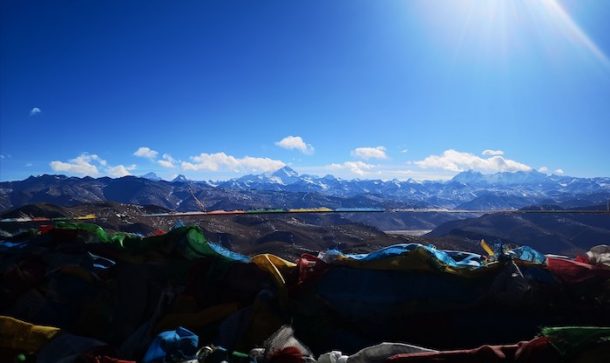
In Shannan, the average rainfall for the two months is around 78mm, in Nagqu it is normally around 100mm on average for July and August, and in Ngari in the west, you can expect to see as little as 25mm a month for July and August. Nyingchi has higher rainfall than most places in Tibet, ranging from 130mm to 140mm a month in the peak months. However, in Nyingchi, the peak months of rainfall are actually in June and July, with lower rainfall in August and September.
How is the Rainy Season different in Tibet?
The good thing about the monsoon in Tibet is that it rarely ever rains for the whole day, unlike in some areas of Asia affected by the Southwest Monsoon. The majority of the rainfall that occurs in Tibet falls in the late afternoons and evenings, while the days are often clear and bright, with plenty of sunshine. However, this does differ in the various regions of Tibet.
In Nyingchi, for example, the rainfall is more focused in June and July, though August and September also see relatively high rainfall. On average, Nyingchi sees around 500mm of the annual rainfall of 679mm within the four months of the monsoon season.
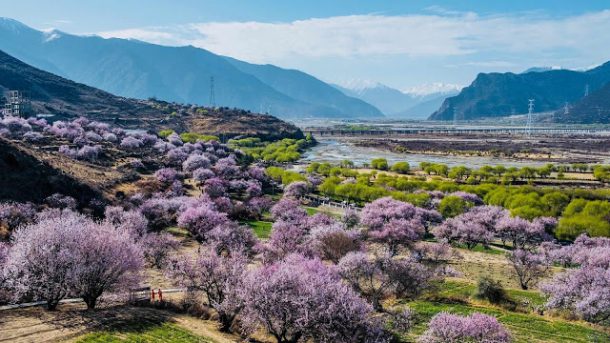
In stark contrast to Nyingchi, Ngari Prefecture in the far northwest of Tibet sees a lot less rainfall for the whole year and is the driest of all the areas of the TAR. With only around 51mm of rainfall in the months of July and August, Ngari only sees around 88mm of rain throughout the entire year.
Things You Can Only Enjoy in Rainy Season
While the rainy season may be a little wetter in some areas, these few months of the year are when the landscape in Tibet is at its most beautiful. Lush grasses cover the plains and prairies of the region, and the vast Changtang Grasslands in the north are the source of some of the best grazing in the world in summer. Wildflowers can be found dotted across the grasslands and alpine meadows, and the scenery is lush and green all over the region.
The higher temperatures and increased humidity caused by the rains of the monsoon also have a beneficial effect for tourists to Tibet. Higher moisture in the air prevents the chaffing you will find in the winter, and causes a slightly higher oxygen level per breath than through the rest of the year, making it a little easier to adjust and acclimatize.
And the summer months of July and August are also some of the best times for Tibetan festivals, including the Shoton (Yogurt) Festival, the famous Ganden Thangka Festival, and the Nagqu Horse Racing Festival, which is always run in summer for the better grass and ground for racing. What’s more, the view of the scenery from the trains to Tibet is much better, with lush green landscapes all the way from the Kunlun Mountains to Lhasa.
Travel Tips:
View Mt. Everest in summer
For most of the year, the views of Mount Everest from the Tibet Everest Base Camp (EBC) and Rongbuk Monastery are the best in the world. However, in the summer, especially in July and August, the higher rainfall can cause clouds to sometimes obscure the peak of the mountain. The monsoon clouds cling to high peaks like this and can mean that you will not be able to see the peak of Mount Everest when you reach EBC. The best option if you are resigned to traveling in the months of July and August is to keep an eye on the weather and try to adjust your schedule to get to EBC on a day that is more likely to be clearer.
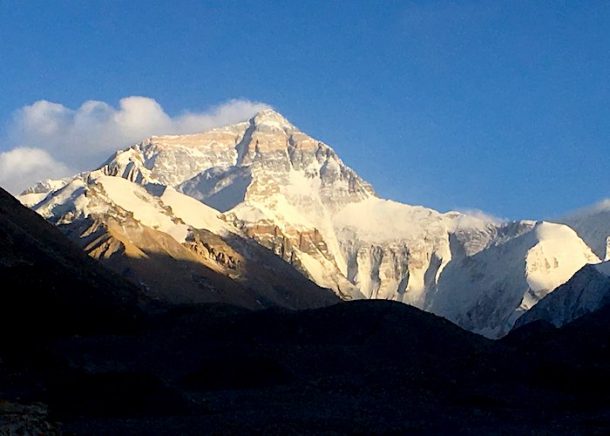
Mt. Kailash Trek in summer
While the rains in the region of Tibet around Mount Kailash do fall in July and August, there is not enough rain to make it worrying for trekking around the kora route. 23-25mm of rain in a month is less than 1mm per day and has very little effect on trekking the Kailash Kora, so you can be sure that you will still be able to travel to Ngari and take on this ambitious and arduous hike. What you really need to watch for is the fact that it can actually snow at any time of year in the higher altitude areas of Tibet, and Dolma La Pass, the highest pass on the trek, sits at an altitude of 5,630 meters.
Recent Posts
The Ultimate Guide to Tibet Tours, Travel, and Trekking Adventures
How to Explore Tibetan Culture
Exploring Lhasa:The Heart of Tibet
All Categories
- About Tibet
- book a Tibet tour
- Buddhism Practice
- Budget Tour
- China-Tibet Train
- Customized Tibet tour
- Historical Sites
- Hot Springs in Tibet
- News
- Photography in Tibet
- Tibet attraction
- Tibet Group Visa
- Tibet Motorcycle Tour
- Tibet Small Group Tours
- Tibet Tours and Tibetan Tour Guide
- Tibet Train
- Tibet Travel FAQs
- Tibet Travel Information
- Tibet Travel News
- Tibet Travel Permit Update
- Tibet Travel Prices Rises
- Tibet Trek
- Tibet Trekking Tour
- Tibet weather and climate
- Tibet Wildlife animals
- Tibet Winter Tour
- Tibetan Buddhism
- Tibetan Cultural Features
- Tibetan Culture and Poeple
- Tibetan Festivals
- What to see in Tibet



